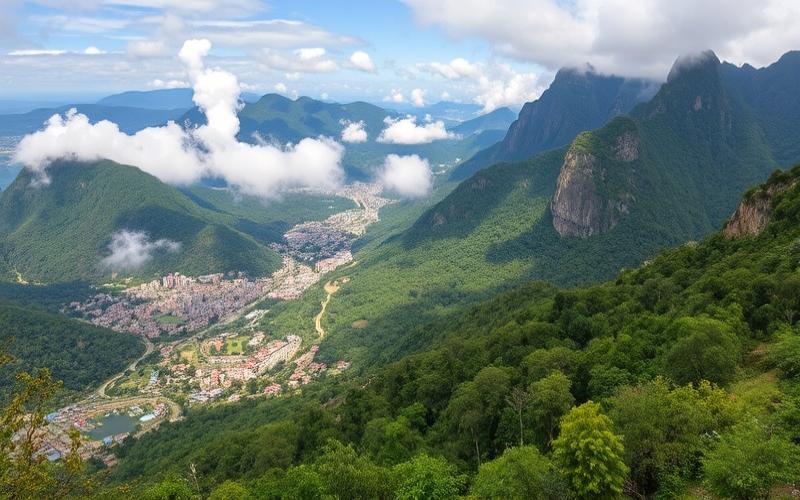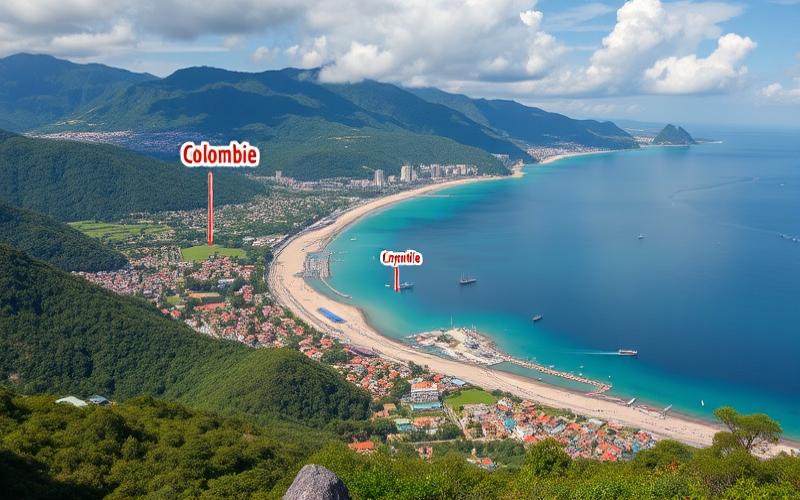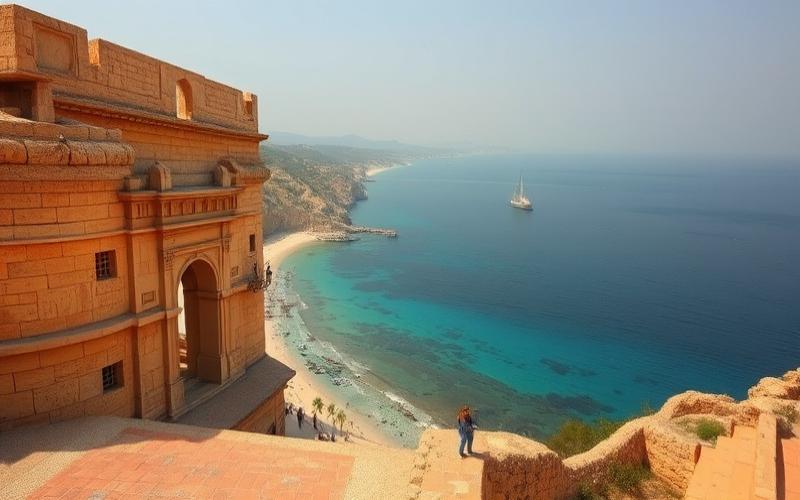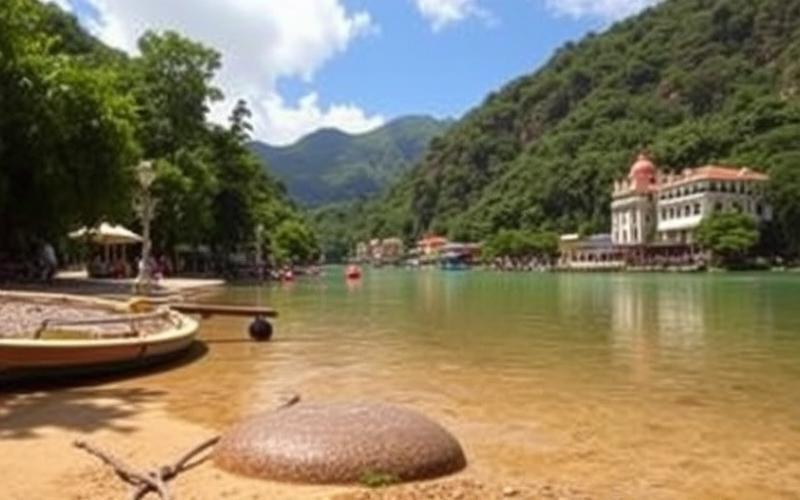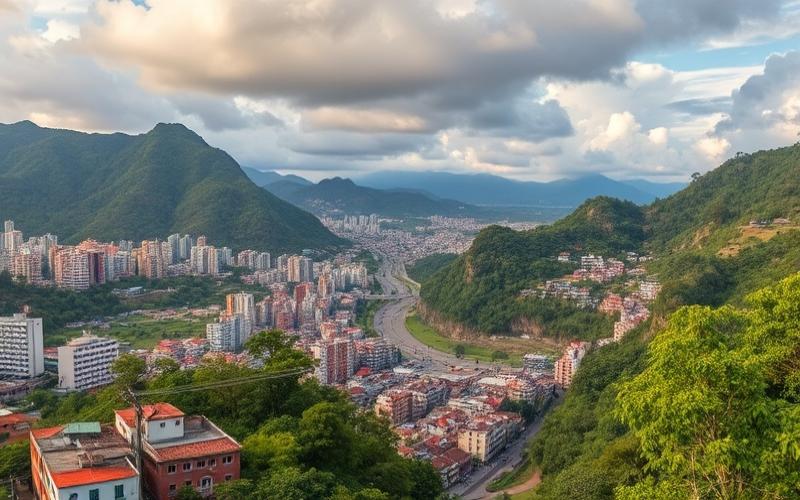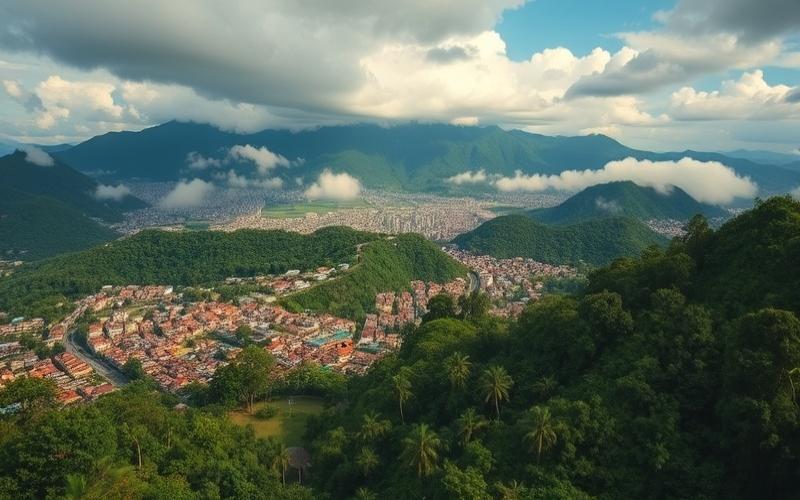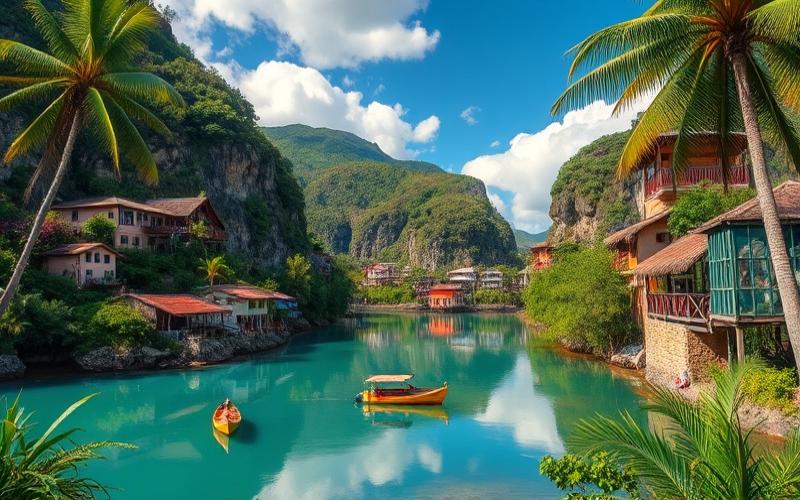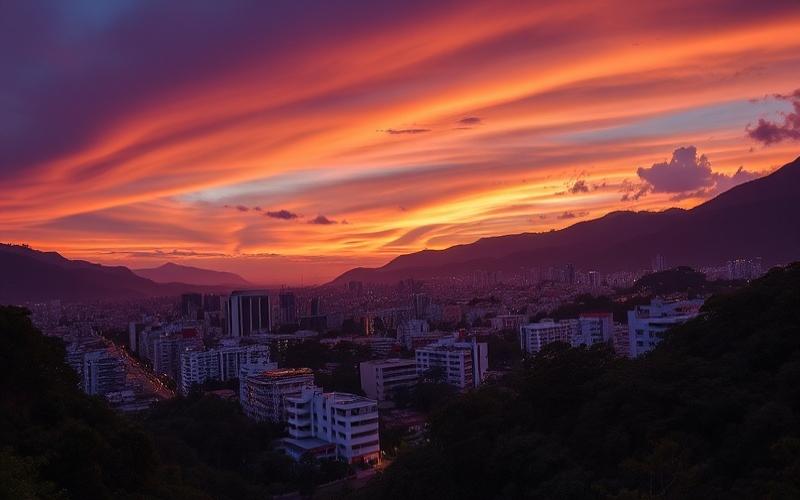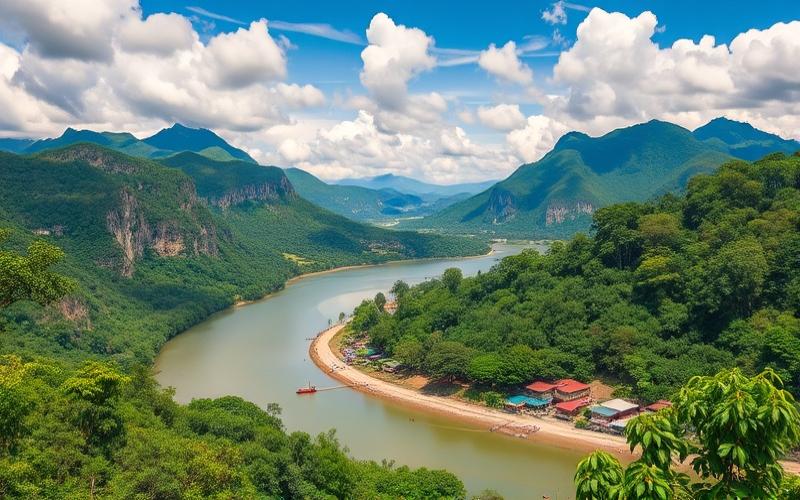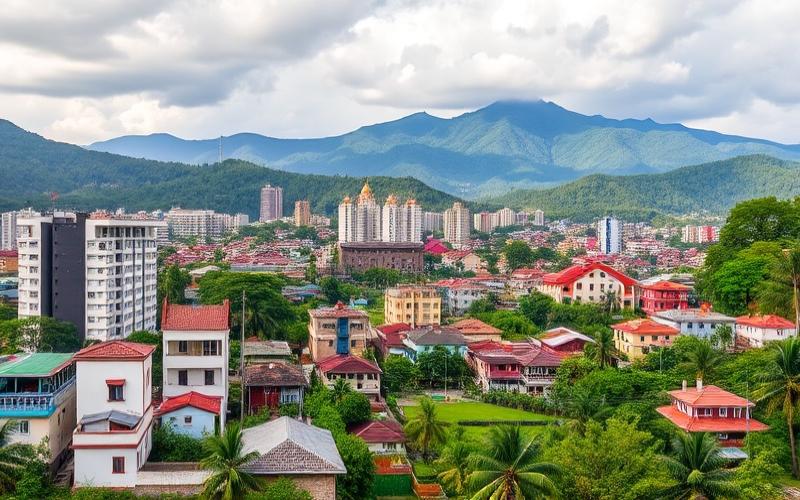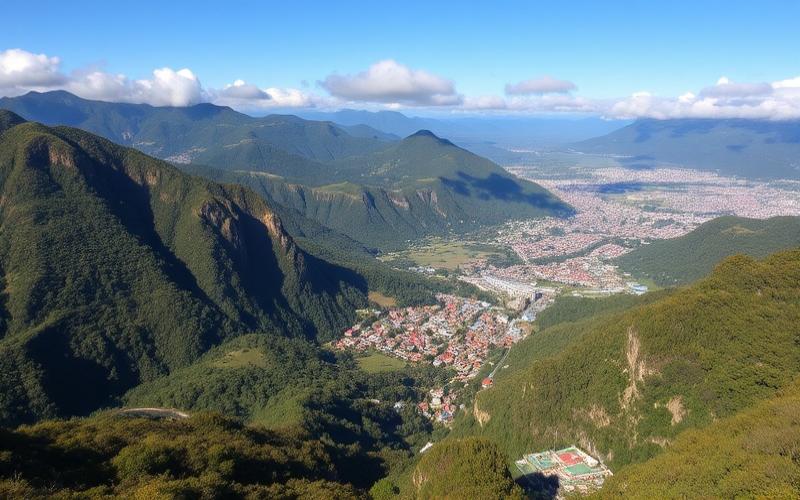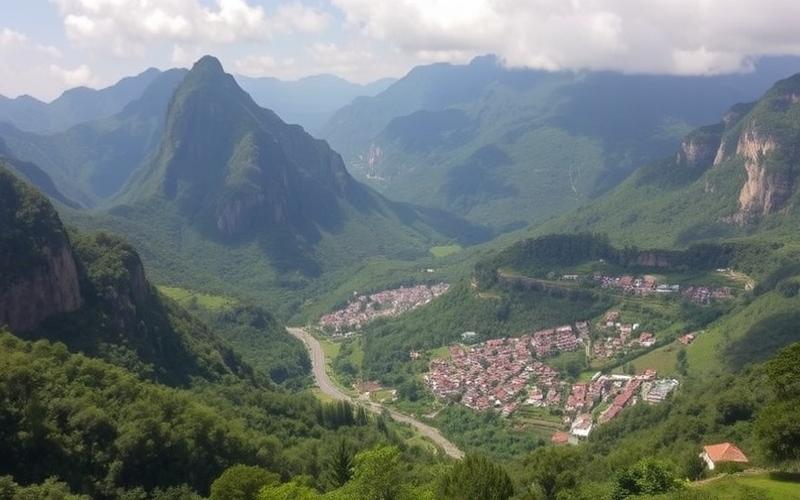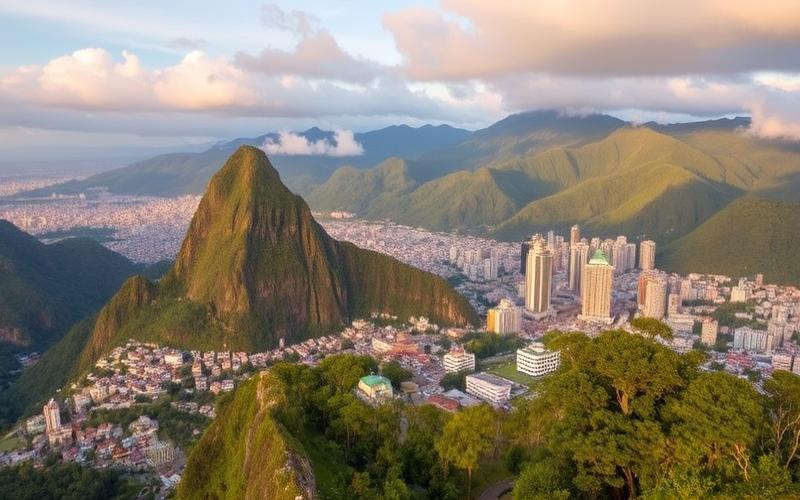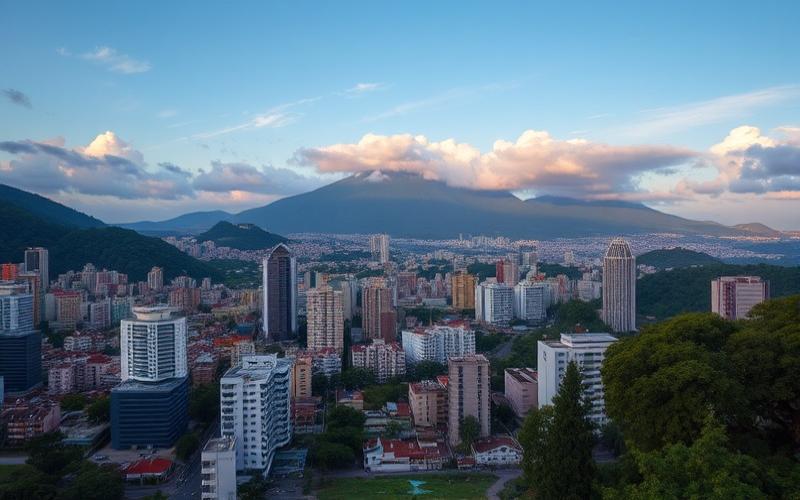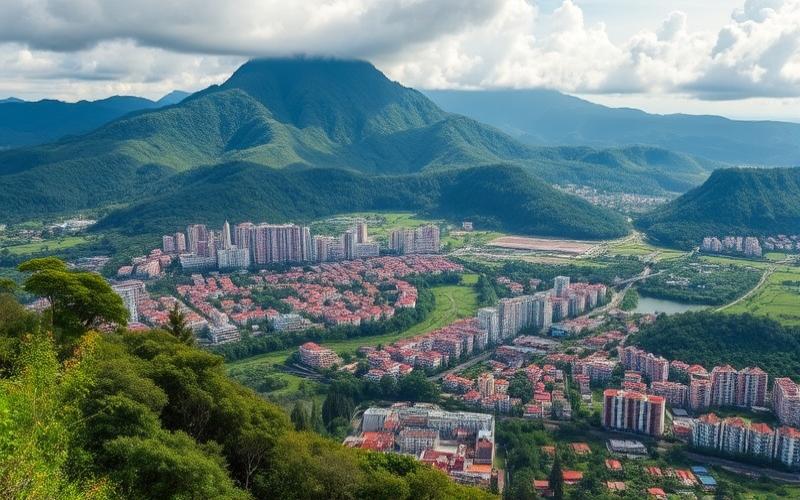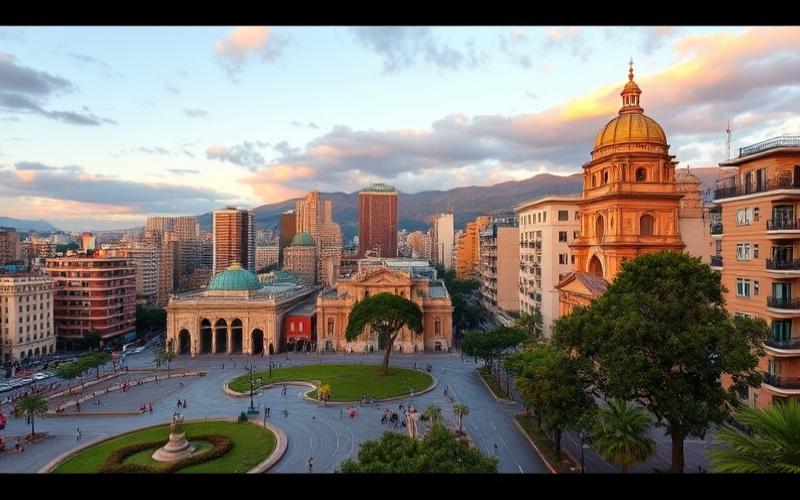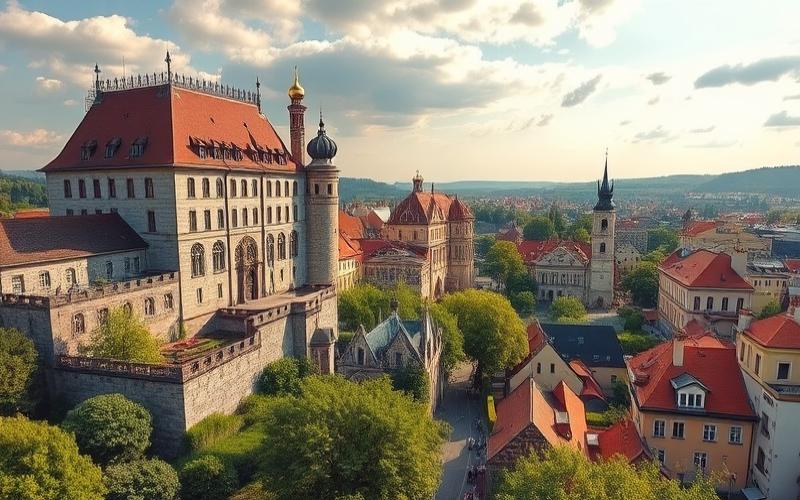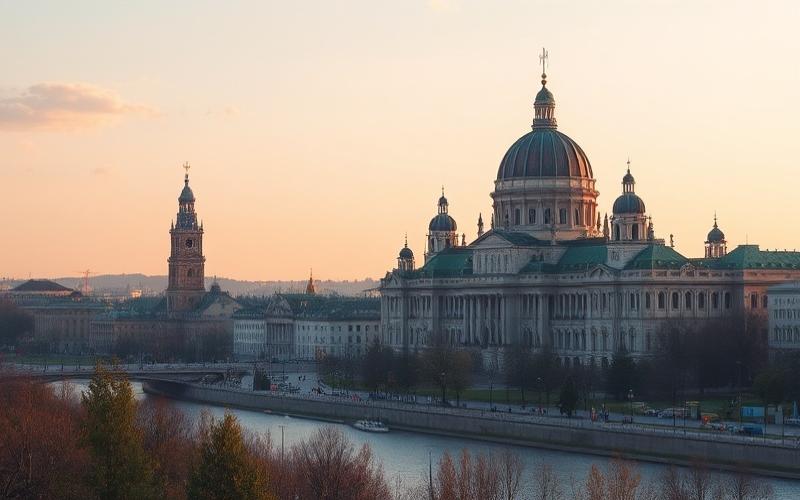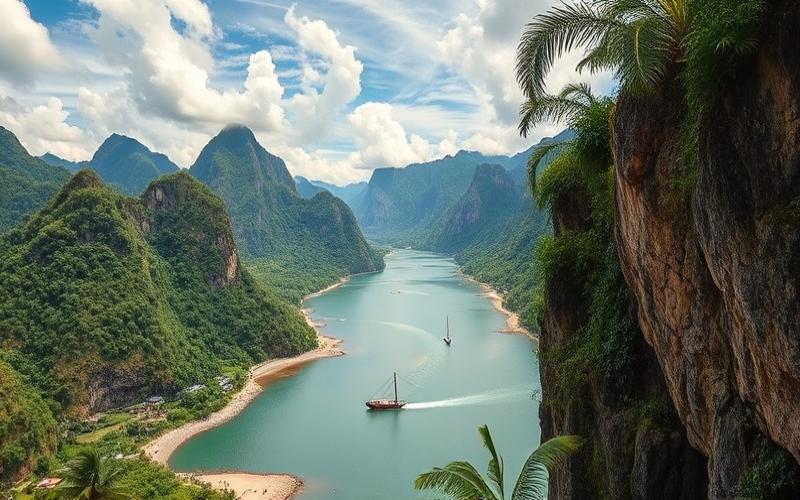
 Published on and written by Cyril Jarnias
Published on and written by Cyril Jarnias
Nestled in northwestern South America, Colombia is a country at the crossroads of diverse cultural and historical influences that have shaped its unique identity. From pre-Columbian Amerindian civilizations to Spanish conquests in the 16th century, this territory has been the stage for numerous profound transformations.
Colombian history is marked by periods of prosperity and turbulence, particularly during the colonial era, independence in the early 19th century led by iconic figures such as Simón Bolívar, and the economic development and political challenges of the 20th century.
By exploring these captivating chapters, one discovers not only a rich cultural heritage but also the struggles and triumphs that forged modern Colombia, a country that continues to play a central role in the region and on the international stage.
Pre-Columbian Origins: Ancient Peoples and Cultures
The current region of Colombia was home to a great diversity of pre-Columbian civilizations, each characterized by unique social systems, cultural and artistic practices, and major archaeological achievements.
Main Ethnic Groups and Regions
| Group | Main Region | Notable Characteristics |
|---|---|---|
| Muiscas | Bogotá Plateau (Altiplano Cundiboyacense) | Political organization in chiefdoms, goldsmithing, advanced agriculture |
| Quimbayas | Upper Cauca Valley | Remarkable goldsmithing, ceramics, gold poporos |
| Taironas | Sierra Nevada de Santa Marta | Urban planning, agricultural terraces, stone architecture |
| Calimas | Río Calima Valley (Pacific region) | Anthropomorphic pottery, goldsmithing, small settlements |
Lifestyles and Community Structures
- Muiscas :
- Intensive agriculture (corn, potatoes, quinoa).
- Hierarchical society, divided into chiefdoms (zipa in Bacatá, zaque in Hunza).
- Homes grouped in villages structured around ceremonial centers.
- Religious practices linked to nature and sun worship.
- Quimbayas :
- Settled in agricultural villages.
- Cultivation of corn, cassava, cotton.
- Social structures based on family clans.
- Importance of regional trade, especially in gold.
- Taironas :
- Construction of complex cities (Ciudad Perdida).
- Agricultural terraces and networks of paved paths.
- Society organized into autonomous communities, each led by a spiritual leader.
- Sustainable management of mountain and forest resources.
- Calimas :
- Life in small groups, scattered villages.
- Agriculture, hunting, and fishing.
- Less centralized social structures, but developed craftsmanship.
Sociopolitical Systems
| Civilization | Political Organization | Distinctive Features |
|---|---|---|
| Muiscas | Confederation of chiefdoms | Dual system: zipa and zaque |
| Quimbayas | Local chiefdoms | Decentralized power |
| Taironas | Autonomous communities | Council of elders, spiritual leaders |
| Calimas | Small chiefdoms | Local leadership, role of artisans |
Cultural and Artistic Practices
- Goldsmithing :
- The Muiscas and Quimbayas are famous for their gold objects (poporos, pectorals, nose ornaments, tunjos).
- The Calimas crafted finely worked diadems, pins, and gold figurines.
- Ceramics :
- Quimbayas and Calimas produced pottery adorned with geometric, anthropomorphic, or zoomorphic motifs.
- The Taironas made funerary urns and utilitarian objects.
- Architecture :
- The Taironas left impressive urban remains (terraces, paths, stone bridges).
- The Muiscas built temples and sanctuaries dedicated to their deities.
Major Archaeological Artifacts
- Quimbaya Poporo (gold, Gold Museum of Bogotá)
- Muisca Tunjos (gold votive figurines)
- Ciudad Perdida Terraces (Taironas, Sierra Nevada)
- Calima Pottery (human and animal figures, diadems)
Influence on Contemporary Colombian Culture
- Goldsmithing traditions are reflected in modern crafts and national symbolism (El Dorado legend).
- Many place names, festivals, and agricultural practices are inherited from pre-Columbian civilizations.
- The current cultural diversity of Colombia’s indigenous peoples (languages, worldviews) perpetuates ancestral heritage.
- Major archaeological sites are key identity and tourist references for the country.
Geographic and Cultural Diversity
- Andean Plateaus: Hierarchical agricultural societies (Muiscas).
- Western Valleys and Mountains: Artisanal and trading cultures (Quimbayas, Calimas).
- Caribbean Region: Urban planning and mountain ecosystem management (Taironas).
- Amazon and Orinoco Region: Nomadic groups, hunter-gatherers, shamanic practices.
The pre-Columbian civilizations of Colombia reveal a cultural, artistic, and social richness whose influence endures in the national identity, cultural practices, and archaeological heritage of the country.
Good to Know:
Pre-Columbian civilizations like the Muiscas, with their complex barter system, and the Taironas, known for their advanced architecture, left significant artifacts that testify to their influence on Colombia’s modern cultural identity, visible especially in crafts and local traditions.
From Spanish Colonization to Independence
In the early 16th century, the Spanish arrived on the coasts of present-day Colombia, motivated by the quest for gold and the desire to spread the Catholic faith. The first expeditions, such as that of Alonso de Ojeda in 1499, explored the Guajira and Magdalena regions.
Before the conquest, the Colombian territory was inhabited by complex indigenous societies, including the Muiscas, Tayronas, and Quimbayas, living from agriculture and crafts. These societies saw their lands invaded, their resources plundered, and their populations decimated by violence, diseases brought by Europeans (such as smallpox), and the working conditions imposed by the Spanish.
Main Spanish Motivations:
- Search for gold (El Dorado myth)
- Expansion of Catholicism through forced conversion of indigenous peoples
- Political and economic control of the territory
Colonial Organization:
- Imposition of the encomienda system: forced labor of indigenous peoples under the pretext of evangelization and protection
- Introduction of the African slave trade to support the colonial economy, mainly in gold mines and sugar cane plantations
- Foundation of Santa Fe de Bogotá in 1538 by Gonzalo Jiménez de Quesada, which became the political and religious center of the territory
- Creation of the Real Audiencia de Santa Fe de Bogotá in 1549, then the Kingdom of New Granada in 1550, administered on behalf of the Spanish Crown
Summary Table:
| Pre-Columbian Society | Main Characteristics | Impact of Colonization |
|---|---|---|
| Muiscas | Agriculture, goldsmithing | Loss of lands, decimation |
| Tayronas | Coastal villages, pottery | Cultural disappearance |
| Quimbayas | Crafts, gold ornamentation | Exploitation and violence |
Faced with oppression, indigenous revolts and resistance movements emerged as early as the 16th century. However, colonial repression remained severe. Gradually, these movements evolved into independence claims, especially in the 18th century.
External Influences:
- Enlightenment ideas (liberty, equality, human rights)
- French Revolution and U.S. independence, which inspired Creole elites to challenge Spanish authority
Revolutionary agitation developed, culminating in uprisings, local independence proclamations, and the formation of armed movements. Decisive battles, such as the Battle of Boyacá in 1819, marked a turning point.
Iconic Figures:
- Simón Bolívar: military strategist, leader of the independence movement
- Francisco de Paula Santander: political and military organizer, architect of the republic
In 1819, Colombia officially gained its independence after years of struggles and revolutions, marking the end of Spanish domination and the dawn of a new era.
Good to Know:
The arrival of the Spanish in the early 16th century disrupted local indigenous societies, intensifying the quest for gold and the spread of Catholicism by figures like Jiménez de Quesada. Independence aspirations in Colombia were fueled by the influence of Enlightenment ideas and international events, leading to independence in 1819 after decisive battles under the leadership of Bolívar and Santander.
From Gran Colombia to the Modern Republic
Gran Colombia was a short-lived republic (1819-1831) founded in the context of the Spanish-American wars of independence, encompassing the present-day territories of Colombia, Venezuela, Ecuador, and Panama. Its capital was Bogotá.
| Original Territories of Gran Colombia |
|---|
| New Granada (Colombia and Panama) |
| Venezuela |
| Quito (Ecuador) |
Geopolitical Context (Early 19th Century):
- Decline of Spanish domination in Latin America, stimulated by Enlightenment ideas and the American and French revolutions.
- Influence of independence movements and the weakening of Spain, occupied by the Napoleonic Wars.
- Unification projects to counter political fragmentation and strengthen resistance against European powers.
Reasons for the Dissolution of Gran Colombia:
Political Tensions:
- Divergences between centralists (Bolívar) and federalists (Santander).
- Power struggles among regional elites, with each territory claiming more autonomy.
Economic Tensions:
- Inequalities in the economic development of regions.
- Difficulties in managing a unified economy, especially regarding war debts and reconstruction.
Social Tensions:
- Rigidity of the social pyramid inherited from the colony.
- Resistance from Creoles, indigenous peoples, slaves, and other groups against political uniformity.
Exogenous Factors:
- Pressures from foreign powers, especially Great Britain and the United States, which favored smaller, more controllable states.
Role of Key Figures:
| Personality | Role in the Transition and Disintegration |
|---|---|
| Simón Bolívar | Promoter of a centralized state, defender of unity and strong power, but faced with regional opposition. His resignation in 1830 precipitated the end of Gran Colombia. |
| Francisco de Paula Santander | Advocate of a more federalist government, he opposed Bolívar, embodying political tensions. He played a decisive role in the reorganization of New Granada after the dissolution. |
Consequences of the Dissolution:
- Emergence of three independent states: Colombia (New Granada), Venezuela, Ecuador (Panama remaining linked to Colombia until 1903).
- Chronic political instability, frequent alternation between centralized and federalist regimes, marked by numerous civil conflicts.
- Gradual affirmation of distinct national identities in each republic, while preserving the Bolivarian heritage.
Challenges and Changes After the Creation of the New Republic (Colombia):
- Overhaul of institutions to adapt the political system to regional realities.
- Economic problems related to post-independence reconstruction, land distribution, and management of inherited debts.
- Multiplication of civil wars and conflicts between liberals and conservatives in the 19th century.
External Influences and International Interactions:
- The United States and the United Kingdom played a role in recognizing and trading with the new republics.
- The Monroe Doctrine (1823) aimed to limit European influence, favoring the autonomy of Latin American states but also their fragmentation.
- Economic pressures, especially around the export of coffee, gold, and mineral resources, guided foreign policy.
Impact on National Identity and Colombian Political Culture:
- The memory of Gran Colombia nourishes an imagination of unity and emancipation, but also disillusionment with internal divisions.
- Political culture remains marked by the opposition between centralism and federalism, as well as distrust of strong executive power.
- The figures of Bolívar and Santander, erected as national heroes, symbolize two antagonistic visions of the nation and governance.
The transition from Gran Colombia to the modern republic forged an ambivalent national identity, oscillating between the dream of continental unity and the reality of fragmentation, a source of both political dynamism and recurring tensions.
Good to Know:
The dissolution of Gran Colombia in 1831, due to internal tensions exacerbated by political differences between Bolívar and Santander, led to the emergence of modern republics like Colombia, influenced by the struggles for independence and the international pressures of the time. Post-independence economic challenges and geopolitical interactions shaped the Colombian national identity, anchoring it in a political culture marked by the quest for stability and unity.
Disclaimer: The information provided on this website is for informational purposes only and does not constitute financial, legal, or professional advice. We encourage you to consult qualified experts before making any investment, real estate, or expatriation decisions. Although we strive to maintain up-to-date and accurate information, we do not guarantee the completeness, accuracy, or timeliness of the proposed content. As investment and expatriation involve risks, we disclaim any liability for potential losses or damages arising from the use of this site. Your use of this site confirms your acceptance of these terms and your understanding of the associated risks.

